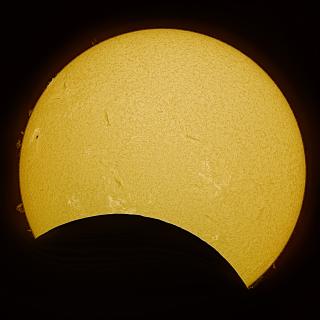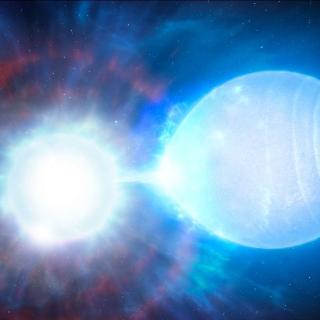It may interest you
-
 This Saturday, 29 March 2025, the Instituto de Astrofísica de Canarias (IAC) was able to follow the partial solar eclipse from the Teide Observatory in Tenerife. Although subtle to the naked eye, this eclipse was used by the IAC's outreach team to raise awareness of the phenomenon among a group of people from the ‘Friends of the IAC’ programme and IAC staff. At the same time, an observation was also made from the IAC Headquarters in La Laguna, which could be seen live on the centre's YouTube channel. The eclipse began at 09:14 UT and ended at 10:56 UT, with its maximum at 10:03 UT. For justAdvertised on
This Saturday, 29 March 2025, the Instituto de Astrofísica de Canarias (IAC) was able to follow the partial solar eclipse from the Teide Observatory in Tenerife. Although subtle to the naked eye, this eclipse was used by the IAC's outreach team to raise awareness of the phenomenon among a group of people from the ‘Friends of the IAC’ programme and IAC staff. At the same time, an observation was also made from the IAC Headquarters in La Laguna, which could be seen live on the centre's YouTube channel. The eclipse began at 09:14 UT and ended at 10:56 UT, with its maximum at 10:03 UT. For justAdvertised on -
 The Roque de los Muchachos Observatory (ORM) of the Instituto de Astrofísica de Canarias (IAC), located on La Palma, has reached another important milestone with the installation of the camera of the LST-4, one of the four Large-Sized Telescopes (LST), which will be part of the Cherenkov Telescope Array Observatory (CTAO), currently under construction. The installation of the camera represents the completion of the telescope assembly and marks its transition to the commissioning phase. After a thorough performance evaluation at the IACTEC building, the IAC's technological and businessAdvertised on
The Roque de los Muchachos Observatory (ORM) of the Instituto de Astrofísica de Canarias (IAC), located on La Palma, has reached another important milestone with the installation of the camera of the LST-4, one of the four Large-Sized Telescopes (LST), which will be part of the Cherenkov Telescope Array Observatory (CTAO), currently under construction. The installation of the camera represents the completion of the telescope assembly and marks its transition to the commissioning phase. After a thorough performance evaluation at the IACTEC building, the IAC's technological and businessAdvertised on -
 A study published today in Nature Astronomy , in which a researcher from the IAC has participated, outlines the discovery of an extremely rare type of binary system composed of two high mass white dwarfs. The two stars are so close together that they will eventually collide resulting in a supernova explosion which, due to its proximity to the Earth, will appear ten times brighter than the Moon. Type 1a supernovae are a class of cosmic explosion often used as "standard candles" to measure the expansion of the Universe. They occur when a white dwarf exceeds the Chandrasekhar mass - the limitAdvertised on
A study published today in Nature Astronomy , in which a researcher from the IAC has participated, outlines the discovery of an extremely rare type of binary system composed of two high mass white dwarfs. The two stars are so close together that they will eventually collide resulting in a supernova explosion which, due to its proximity to the Earth, will appear ten times brighter than the Moon. Type 1a supernovae are a class of cosmic explosion often used as "standard candles" to measure the expansion of the Universe. They occur when a white dwarf exceeds the Chandrasekhar mass - the limitAdvertised on
